




































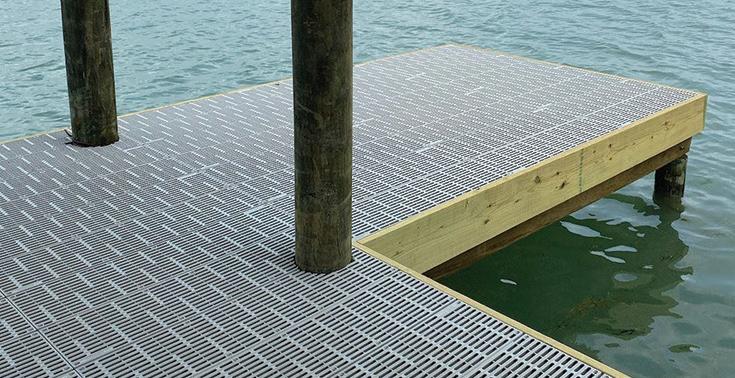







CEO Michael Shepard
VICE PRESIDENT OF CONTENT Leon Espinoza
EDITORIAL DIRECTOR Mike Teegarden, CCC
DEPUTY EDITORIAL DIRECTOR
Noble Sprayberry
SENIOR EDITOR Jennifer Paton, CCC
FLORIDA CURRENTS EDITORS
Chasity Anderson, CCC; Valeri Pearon
ASSISTANT EDITORS Victoria Hampton, CCC; David Herder, CCC
ASSOCIATE EDITOR
Nina Todea
PUBLICATIONS PRODUCTION
SENIOR MANAGER
Elizabeth Beatty
PUBLICATIONS COORDINATOR
Alyssa McDougle
Members acknowledge that $4.31 a year, plus postage, is the cost to publish 12 issues a year of FLORIDA CURRENTS ISSN 23276304 (USPS 8300). Published by Pioneer Utility Resources Inc., 5625 NE Elam Young Pkwy. Ste. 100, Hillsboro, OR 97124—a not-for-profit Oregon cooperative corporation—the magazine serves the communication needs of consumerowned electric utilities in Florida. Preferred Periodicals postage paid at Hillsboro, OR 97123 and at additional mailing offices.
Postmaster: Send address changes to 5625 NE Elam Young Pkwy., Ste. 100, Hillsboro, OR 97124-6422.
HOW TO CONTACT FLORIDA CURRENTS
Subscription services:
Nonmember subscriptions $15 U.S. a year; $25 foreign a year. Prepayment required. Allow 4-8 weeks for first issue. Identify local edition desired. Have a problem receiving your magazine? Utility members should contact their utility office. Nonmembers call 503-357-2105 or email mailingdept@pioneer.coop. Back issues:
Back issues and extra copies are $3 each, prepayment required. Supply is limited. Identify edition, month and year. Call first to check availability. Contact Pioneer Utility Resources: P.O. Box 1306, North Plains, OR 97133-1306; 503-357-2105; email: mailingdept@pioneer.coop.
DISPLAY ADVERTISING INQUIRIES
American MainStreet Publications 611 S. Congress Ave. Ste. 504 Austin, TX 78704-1714; 800-626-1181 or 512-441-5200; amp.coop.
© 2024 Pioneer Utility Resources. All rights reserved. Reproduction in whole or in part without written permission is prohibited. Direct reprint requests to editor@floridacurrents.com or for more information, visit www.pioneer.coop.

June 2024 • Volume 13, No. 8 For additional content, search @FloridaCurrents on your favorite social media sites and floridacurrents.com.


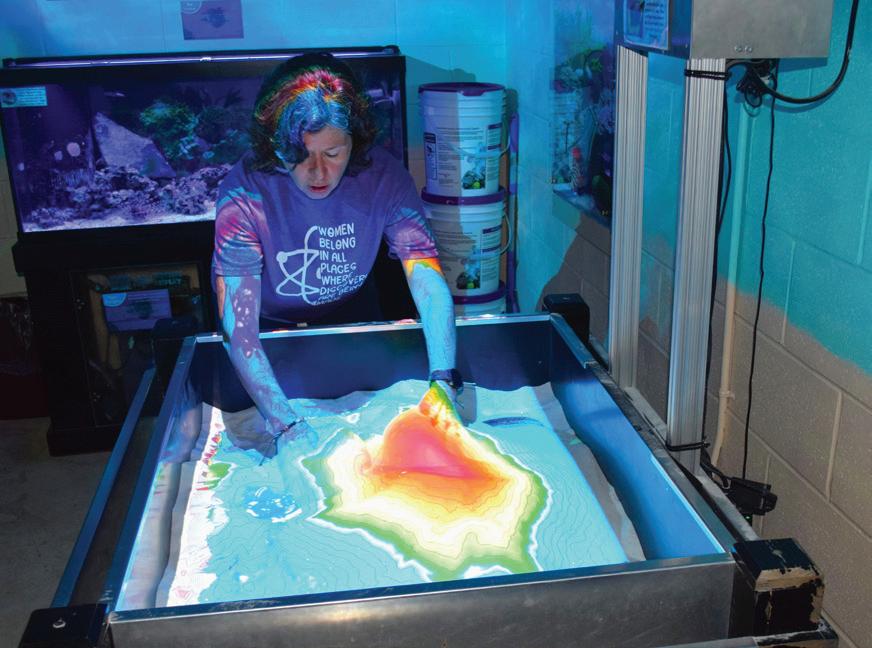










Sign up in SmartHub for outage notifications to learn of estimated time of restoration (ETR) in the event of an outage. In the SmartHub app, go to More > Settings > Manage Notifications > Service to select your notification preferences. Please note, ETRs will not be provided in the event of hurricanes or widespread outages.
Follow us on Facebook for Hurricane Restoration
For updates following a hurricane, “Like” Glades Electric Cooperative on Facebook or bookmark our page, www.facebook.com/GladesElectricCooperative, in your browser to view our page without an account.
Restoration updates will be posted each morning and evening.
If your phone number or email has changed, be sure to provide our Member Services Department with your updated information. In the event of an emergency, planned outage or other important matters, we want to make sure you are kept informed.
Use the Contact Us QR code to share your updates or call us at 863-946-6200.



If you have a gate, be sure we have your gate code or have a GEC lock on the gate. For prompt outage restoration and access for critical maintenance, we must always have access as indicated in our membership agreement. Access issues increase co-op costs by unnecessarily sending maintenance or restoration personnel to locations multiple times.
Call GEC at 863-946-6200 to provide a code or to get a lock. Scan the QR code to fill out the Contact Us form at www.gladeselectric. com/about-us/contact.
Surge Protection
Protect your motor-driven appliances from surges with a meter-base surge protector for $6 a month and a $30 installation fee. For details, scan the QR code to visit our surge protection webpage.



It’s smart to prepare for post-hurricane outages by having a generator on hand, but make sure your preparations include learning generator safety.
• The Electrical Safety Foundation strongly recommends a licensed electrician install home generators to ensure they meet all local electrical codes.
• Do not connect generators directly to the household wiring without an appropriate transfer switch installed. Power from generators connected directly to household wiring can backfeed along power lines and electrocute anyone encountering them, including utility lineworkers making repairs.
• Never operate a generator inside your home or in other enclosed or partially-enclosed spaces. Generators can quickly produce high levels of carbon monoxide, which can be deadly.
• Opening doors and windows or operating fans to attempt to ventilate a generator will not prevent CO build-up in the home. Even with a working CO alarm, you should never use a gasoline-powered generator inside your home or in a garage.
• Position the generator outside the home and away from doors, windows and vents that can allow CO to enter the home.
• Plug appliances directly into the generator or use a heavy-duty, outdoorrated extension cord.
• Make sure extension cords used with generators are rated for the load and have three-pronged plugs. They should be inspected for damage, such as cuts and/or worn insulation before use.
• Turn off appliances powered by the generator before shutting down the generator.
• Always keep children away from portable generators. n
Step 1
step 1
Generation
Generation
step 1
Electricity is generated from various sources.
Generation
step 1
Electricity is generated from various sources.
step 5
Distribution Substation
step 5
Generation
Electricity is generated from various sources.
Distribution Substation
step 5
Voltage is lowered further for safe distribution.
Distribution Substation
Voltage is lowered further for safe distribution.
Electricity is generated from various sources.
step 2
Step 2
step 1
Generation
Step-Up Transformer
Step-Up
step 2
Transformer
Step-Up Transformer
step 2
Voltage is increased to push the electricity over long distances.
Electricity is generated from various sources.
Voltage is increased to push the electricity over long distances.
Step-Up Transformer
Voltage is increased to push the electricity over long distances.
step 3
step 2
Electricity powers our homes, offices, hospitals and schools. We depend on it to keep us warm in the winter and cool in the summer, charge our phones and binge TV shows. If the power goes out, even briefly, our lives can be disrupted.
Voltage is increased to push the electricity over long distances.
Transmission Power Lines
step 3
Step-Up Transformer
Step 3
step 6
step 5
Voltage is lowered further for safe distribution.
Distribution Power Lines
The system that delivers your electricity is often described as the most complex machine in the world, and it’s known as the electric grid.
Distribution Substation
step 6
Distribution Power Lines
wind and nuclear energy. Across the United States, more than 11,000 power plants deliver electricity to the grid.
Electricity travels across these lines in your community.
Voltage is lowered further for safe distribution.
step 6
Distribution Power Lines
step 7
Electricity travels across these lines in your community.
step 6
Final Stop
Electricity travels across these lines in your community.
step 7
Glades Electric Cooperative receives power from its generation and transmission co-op, Seminole Electric. GEC works closely with Seminole Electric Cooperative to provide electricity at the lowest cost possible.
Transmission Power Lines
step 3
Lines carry electricity over long distances.
Voltage is increased to push the electricity over long distances.
Transmission Power Lines
Lines carry electricity over long distances.
Transmission Power Lines
step 4
Lines carry electricity over long distances.
Lines carry electricity over long distances.
step 3
Transmission Substation
step 4
Transmission Power Lines
step 4
Voltage is lowered so electricity can travel across the local system.
What makes it so complex? We all use different amounts of electricity throughout the day, so the supply and demand for electricity is constantly changing. For example, we typically use more electricity in the mornings when we’re starting our day or in the evenings when we’re cooking dinner and using appliances.
Final Stop
step 7
A transformer reduces voltage a nal time, and electricity is sent to your home.
Distribution Power Lines
Electricity travels across these lines in your community.
Final Stop
step 7
Final Stop
A transformer reduces voltage a nal time, and electricity is sent to your home.
Being part of a G&T benefits members by placing ownership and control in the hands of their co-op, prioritizing affordability and reliability, supporting local economic development and fostering a sense of community.
Transmission Substation
Transmission Substation
Step 4
Transmission
Lines carry electricity over long distances. step 4
A transformer reduces voltage a nal time, and electricity is sent to your home.
Voltage is lowered so electricity can travel across the local system.
Severe weather and other factors also affect how much electricity we need.
Substation
Voltage is lowered so electricity can travel across the local system.
Transmission Substation
Voltage is lowered so electricity can travel across the local system.
The challenge for electric providers is to plan for, produce and buy enough electricity so it’s available exactly when we need it.
Voltage is lowered so electricity can travel across the local system.
Too much or too little electricity in one place can cause problems. So, to make sure the system stays balanced, the electric grid must adjust in real time to changes and unforeseen events.
ELECTRICITY
from push the distances.
from push the distances.
from push the distances.
Lines over Substation electricity local system.
Lines over Substation electricity local system.
Lines over Substation electricity local system.
Step 5
A transformer reduces voltage a nal time, and electricity is sent to your home.
To get electricity from power plants to members, the co-op needs a transportation system.
High-voltage transmission lines act as highways for electricity, transporting power over long distances. These lines are supported by massive towers and travel through vast landscapes, connecting power plants to electric substations.
step 5
Distribution
Substation
Distribution Substation
step 5
Voltage is lowered further for safe distribution.
Voltage is lowered further for safe distribution.
step 5
Distribution Substation
Distribution Substation
Voltage is lowered further for safe distribution.
step 6
Voltage is lowered further for safe distribution.
At its core, the electric grid is a network of power lines, transformers, substations and other infrastructure that spans the entire country. However, it’s not just a singular system. It’s divided into three major interconnected grids: the Eastern Interconnection, the Western Interconnection and the Electric Reliability Council of Texas.
Distribution Power Lines
Step 6
step 6
Substations are like pit stops along the highway, where the voltage is adjusted. They play a crucial role in managing power flow and ensuring electricity is safe for use.
Once electricity is reduced to the proper voltage, it travels through distribution power lines, like the ones typically seen on the side of the road.
Distribution Power Lines
Electricity travels across these lines in your community.
step 6
Distribution Power Lines
These grids operate independently but are linked to allow electricity to be transferred between regions when backup support is required.
Distribution Power Lines
step 7
Electricity travels across these lines in your community. Step 7
Electricity travels across these lines in your community.
Final Stop
Electricity travels across these lines in your community.
step 7
Final Stop
step 7
Final Stop
A transformer reduces voltage a nal time, and electricity is sent to your home.
Final Stop
A transformer reduces voltage a final time, and electricity is sent to your home.
A transformer reduces voltage a nal time, and electricity is sent to your home.
Within the three regions, seven balancing authorities known as independent system operators or regional transmission organizations monitor the grid, signaling to power plants when more electricity is needed to maintain a balanced electrical flow. ISOs and RTOs are like traffic controllers for electricity.
A transformer reduces voltage a nal time, and electricity is sent to your home.
The journey of electricity begins at power plants. Power plants can be thought of as factories that make electricity using various energy sources, such as natural gas, coal, solar,
Distribution lines carry electricity from substations to homes, schools and businesses. Distribution transformers, which look like metal buckets on the tops of power poles or large green boxes on the ground, further reduce the voltage to levels suitable for household appliances and electronic devices.
After traveling through transformers, electricity reaches members.
Glades Electric is proud to be your local, trusted energy provider. From the time it’s created to the time it’s used, electricity travels great distances to be available at the flip of a switch. That’s what makes the electric grid our nation’s most complex machine—and one of our nation’s greatest achievements.
If your electrical components are damaged, you may be responsible for repairs. Identif y your type of ser vice connection below to learn what your responsibilities are. You may need to complete repairs before power can be restored to your home
Transformer
Power pole
Power distribution lines
Service line
Tree trimming
The co-op trims vegetation around service lines every several years. However, for safety and reliability, it is best to avoid planting trees with the potential to grow into service lines.
Padmounted transformer
Co-op owned Member-owned
Service line
Meter socket and jaws
Service point
Weatherhead
Service mast
Service mast guy
Meter
Meter socket
Service panel
Note: This graphic depicts overhead and underground service. Please be aware of which type of service you receive at your home or business.



What is it?
Operation Round Up is a program that allows members to round up their monthly bills to fund projects benefiting community members in need.
Nine members serve on the board of directors for Glades Electric Charitable Trust, a 501(c)(3) nonprofit organization. Directors review applications and approve grants.










$11,104.75 of Operation Round Up funds were distributed to support individuals and nonprofit organizations in April 2024.
How does it work?
$138 55 cents to your neighbor in need. The average yearly contribution is $6 per member.


Funds from Operation Round Up go right back into the communities we serve.




8,253 accounts participate in Operation Round Up or Operation Round Up Plus. Round Up Plus allows members to give even more, adding any set amount, $1 or more, to their bills each month.
45%
How can I help?


Sign up for Operation Round Up in the SmartHub app, stop by the office or call Member Services at 863-946-6200.
raised through Operation Round Up and Round Up Plus in March 2024.
Did you know?


$4,406.78










How can I get help?














The participation rate it would take to raise more than $70,000 annually to support our communities. 75%
If you or a member you know needs financial assistance, please complete an application at: www.gladeselectric.com/community/operation-round-up.


Better Way to hearTV®
“Now Jack can control the volume on his TV•Ears while I set the TV volume or mute it for complete quiet. Once again, he can understand every word and we can watch our favorite TV shows together.”
— Darlene & Jack B., CA

Doctor recommended TV•Ears has helped millions of people with hearing loss enjoy their favorite television shows, movies and streaming content without disturbing others.
The Voice Clarifying Technology® reduces background noise and clarifies hard to hear television dialog making voices and words understandable. 120db of volume makes TV•Ears the most powerful television listening system on the market!
Quiet TV mode lets others mute the television or set the volume to their preferred level while you listen as loud as you want on the headset.

















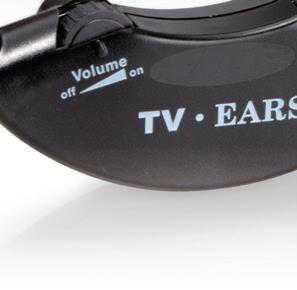






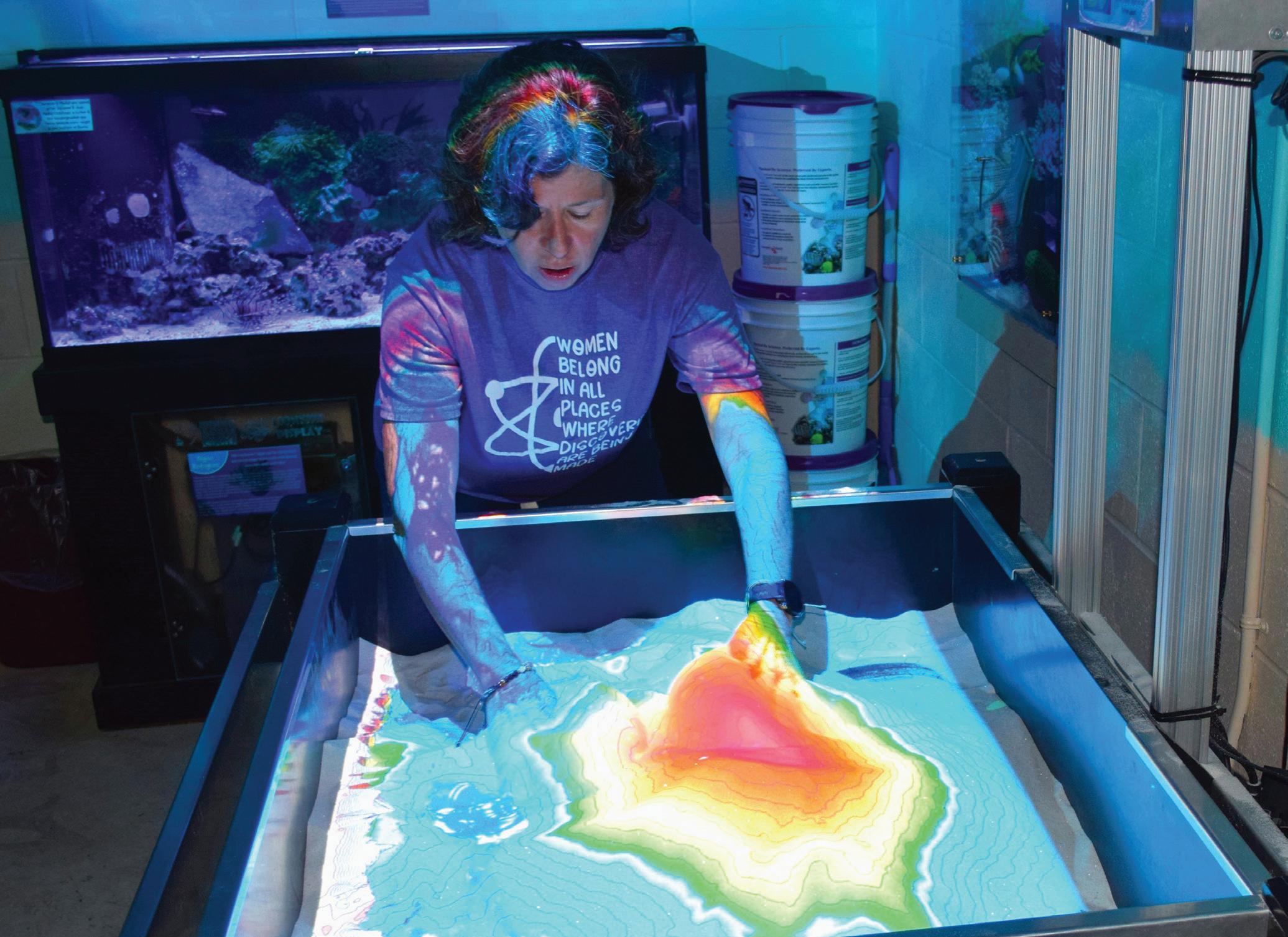




Story and photos by Nick Thomas
Little space is wasted in the 8,000-squarefoot Emerald Coast Science Center, where walls are covered with informative posters and ceiling paintings. Interactive exhibits offer experiences focused on physics, astronomy and more.


Live animals are also prominent, with an assortment of birds, reptiles and mammals. All are rescues donated to the center. The critters are cleverly named after scientists, an idea Director Diane Fraser introduced several years ago. For instance, a blue and gold macaw is named Cici in honor of Cecilia Payne-Gaposchkin, an astronomer and astrophysicist who proposed in her 1925 doctoral thesis that stars were composed of hydrogen and helium.
“We’re kind of sneaky like that,” Diane says. “Most kids can probably tell you
the names of their favorite Major League Baseball players or who all the current top movie stars are, but if you ask them to name famous scientists, most can only come up with Albert Einstein.
That’s heartbreaking to me. Through our animals, they not only learn about wildlife and the environment but the famous people they’re named after.”
transitioned to being a stay-at-home mom of their two daughters. In the early 2000s, she discovered the engaging children’s activities offered by the ECSC and volunteered to teach a few of the center’s programs.
By 2014, her oldest daughter was in college, and the youngest was driving.

“The kids were growing up, and I was this newly untethered person wondering what to do with myself,” Diane says.

After graduating with a master’s degree in forensic science from the University of Alabama and working as a research chemist for the Food and Drug Administration in Cincinnati, Diane’s career path took an unexpected turn. For the past decade, she’s been the ECSC director.
A native of Mobile, Alabama, and raised in Pensacola and Niceville, Diane returned to Florida with her husband in 1999. They settled in Fort Walton Beach, where Diane

At the time, the center was moving from a park known locally as The Landing to a new site on Southwest Memorial Parkway. Diane’s passion for the museum and her science credentials were so appreciated that she was soon asked to serve as interim director to supervise the move. She accepted the position, which later became permanent, but she was aware of her limitations.
“I had no experience working for a nonprofit organization,” she says. “But in


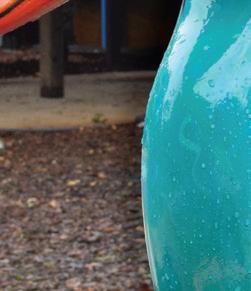





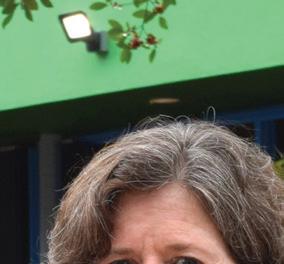









addition to ignorance, I had enthusiasm. When coupled, that can create a powerful tool. You don’t know what you don’t know, but with determination, you can tackle and solve problems that come your way.”
There were plenty of difficulties confronting the center during the expansion. The new site on almost 3 acres was bought from the city and required a 30-year mortgage, so securing additional funding sources was essential.
“The museum programs had been stagnant for a while, so we had to convince the community to see our potential,” Diane says. “We acquired some sponsorships to invest in our programs, and we’ve been evolving and growing ever since, except for when the pandemic struck.”
Closed for three months, the museum had no outdoor activities for visitors when COVID-19 hit in early 2020. But since then,




open-air exhibits have grown substantially and continue to expand.

A new outdoor planetarium is expected to open in mid-2024, funded by a recent $100,000 Impact 100 grant. By 2022, the number of children visiting the center on school field trips topped 5,000—close to prepandemic levels. Diane says visitor numbers grew even more in 2023, and the center welcomed more than 700 annual family memberships. She expects these numbers to grow as new programs and activities are added.
make their own yo-yos,” Diane says. “It’s those types of activities that keep visitors coming back.”
Another popular activity is the sciPad SMALLab room, featuring a 15-by-15foot interactive floor monitored by infrared motion-detecting cameras. Using electronic wands, students can move planets around the solar system, perform virtual chemical experiments or even dip into the arts by painting or learning the vocabulary of another language.

One popular ECSC program is Discover Science Saturday, offered on the first weekend of every month with ideas coming from surprising sources. Diane remembers a young man walking into the center last year offering to demonstrate yo-yo tricks.
“There’s a lot of physics involved with yo-yo movement, so we told him he could come and demonstrate, and we would develop an activity where kids could


“It’s like playing on an iPad the size of a room,” Diane says. “Whenever I give a talk to groups about the center, I take along a copy of the periodic table of elements to illustrate that the piece of paper in my hand shows all the elements that make up the entire universe,” she says. “That’s incredible to me. I hope visitors walk away with that same profound sense of awe and wonder that understanding science can bring.”


Story and photos by Marcy Chapman


Jane and Bob Adler own Animal Lovers Farm in Venus. Their 20-acre property, just 15 minutes from Lake Placid, is covered in majestic oaks and welcomes travelers interested in a unique experience.
“Traveling upstate from Miami, we found our perfect enchanted forest in Venus,” Jane says. “It’s classic old Florida. Now, after a period of remodeling, we are in our third year of being hosts. We treasure seeing the joy in people—adults and kids—as they bond with our animals and relax in this incredibly special place. People love our friendly horses, adorable miniature horses, donkeys and playful goats, busy chickens, ducks, and geese—even a sweet mule.”
Their animals often roam free on the farm.
“Keep watch,” Jane says with a laugh. “You may find a donkey at your door, at any time, looking for a treat.”


Often known as farm stays, places like Animal Lovers Farm are scattered across Florida and are a key part of the state’s agritourism industry. Visitors can enjoy the countryside’s natural beauty, learn about farming, interact with animals or just relax.
At many farm stays, visitors—especially youngsters— can experience the rhythm of farm life through hands-on opportunities. Guests might collect eggs for breakfast, feed the animals, ride horseback, pick fruit, fish, kayak, grill out or make s’mores around a fire pit. For some, it is an opportunity to find out where the carrots in their lunch originated.
Each destination has charms of its own. For example, the Adlers offer three lodging options for their guests. The Big House sleeps eight. The Country Cabin is filled with 100 years of history and sleeps three. The Bunkhouse, inspired by the “Yellowstone” TV series, sleeps six. The Adlers have plans for a “barndominium” with three new units.

The property features a scenic lounging area with a pond and










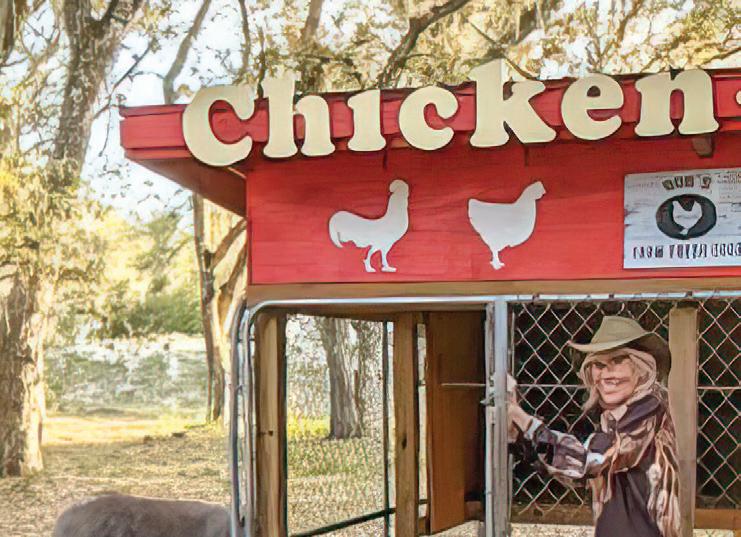








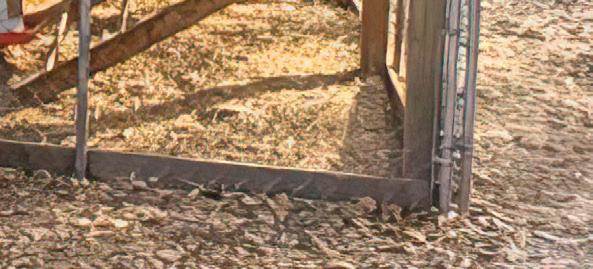




waterfall. After enjoying an afternoon of horseback riding—free beginner lessons are available—guests can stargaze while lounging in the family-sized hot tubs at each lodging site.


“Guests come for a weekend and stay for a week, sometimes a month,” Jane says. “Most are repeaters.”
Farm stays benefit the farmers, their guests and the preservation of the history and culture of farming. Farmers profit from the additional source of income while fostering connections between rural and urban residents. Farm stays also educate the public about environmental concerns, land, water, air and the protection of open spaces and wildlife habitats.
Westgate River Ranch Resort & Rodeo is an authentic 1,700acre dude ranch one hour south of Orlando in Polk County. Guests are offered a cowboy-themed glamping—or fancy camping—ranch stay experience that appeals especially to children. Voted the No. 1 glamping spot by USA Today, Westgate River Ranch guests choose from accommodations including fully outfitted teepees, wagons and tents. Horseback riding, nature
hikes, a petting farm and wildlife airboat and swamp buggy rides are topped off every Saturday night by a championship rodeo.

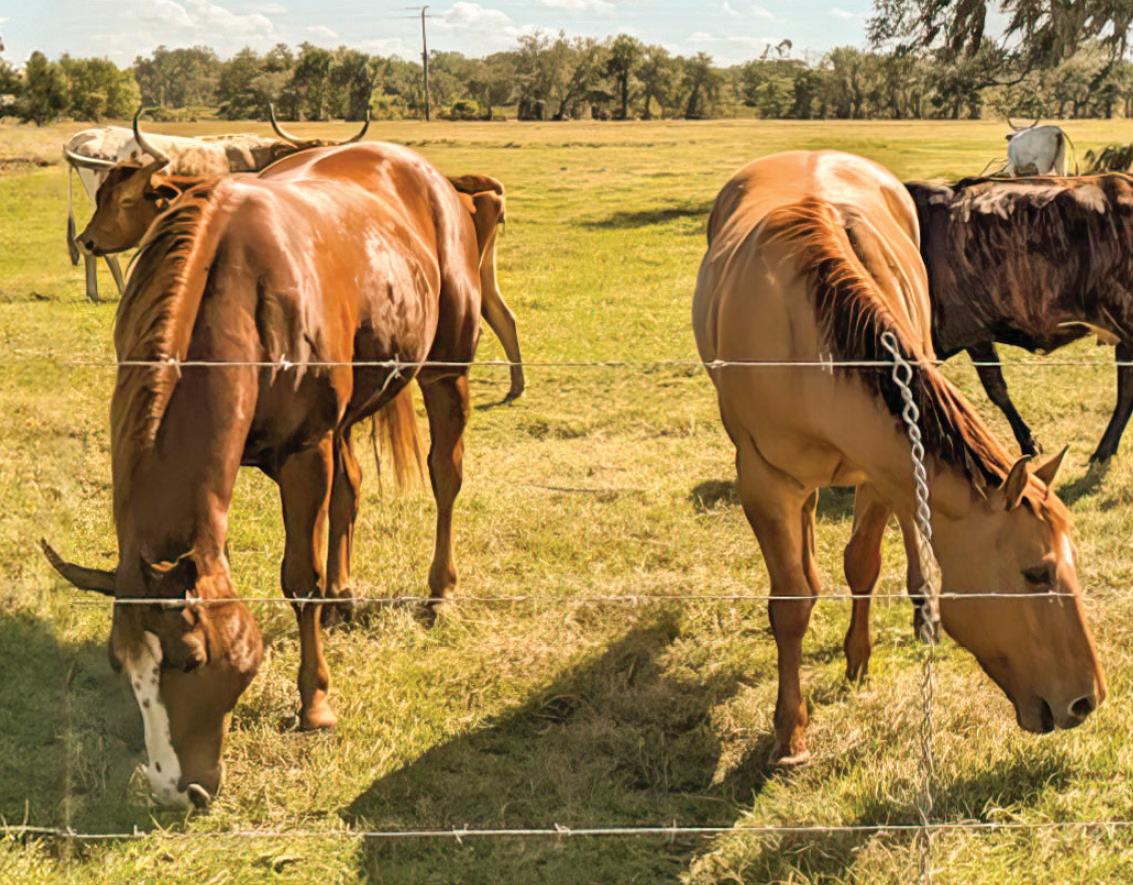
Manatee County is home to Triangle Ranch, a working cattle ranch and farm stay. It’s a wide-open 1,143-acre slice of Florida, just north of Myakka River State Park, where guests can experience farming and glamping. More than 3 miles of the Myakka River winds through the shade of oak and palm trees. Not only does the ranch land protect the quality of water and life around the river, but these undeveloped acres also maintain the integrity of an entire wetlands system.
Triangle Ranch is owned by philanthropist Elizabeth Moore, who has a great passion for conservation.

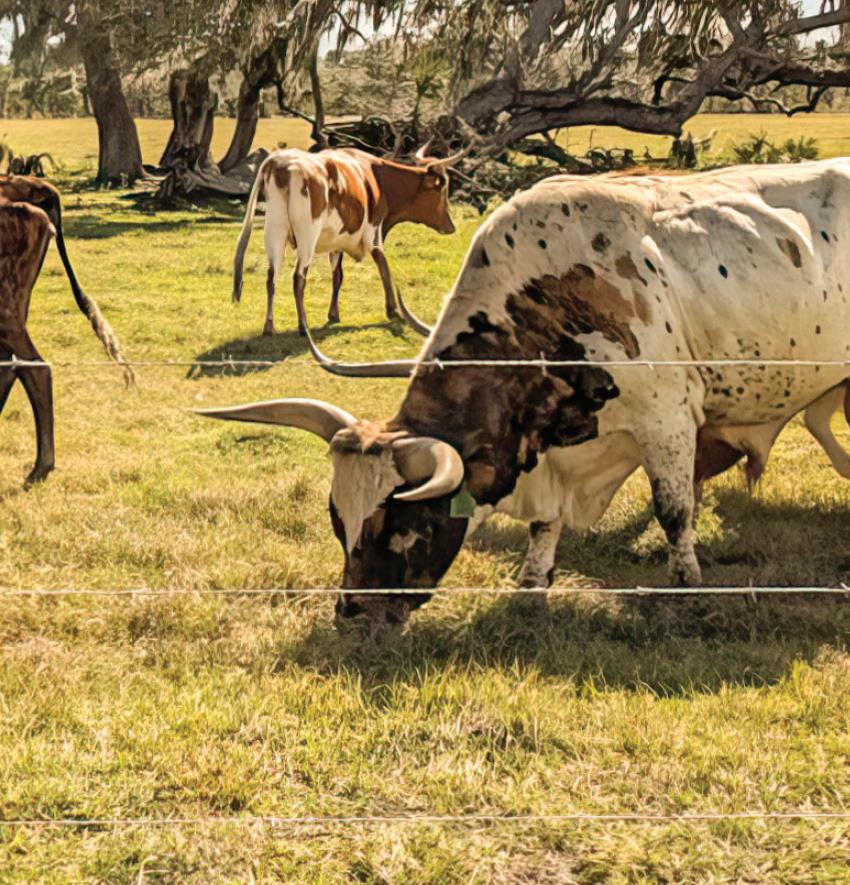
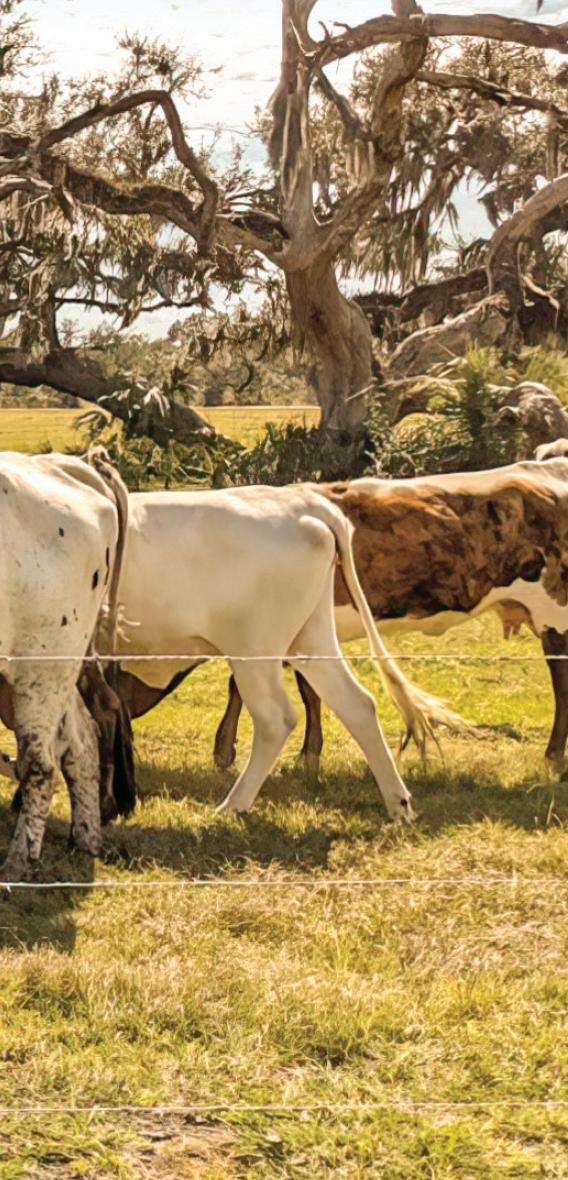

“When I first saw it, I had an epiphany,” Elizabeth says. “It was so beautiful, with the river and all the wildlife. I just wanted to save it. I knew I had to keep it the way it was.”
The Southwest Florida Water Management District holds a permanent conservation agreement on the property. Elizabeth is working with the Conservation Foundation to restore the land to its optimal natural function.
Getting acquainted with Triangle Ranch may include an ATV excursion through Florida wilderness and across the Myakka River. Cruising along, guests keep their eyes peeled for otters, alligators, turtles and deer. More than 100 species of birds frequent the Myakka area, including roseate spoonbills, osprey, bald eagles and sandhill cranes.
A highlight of visiting Triangle Ranch is seeing the curvy-horned Florida Cracker cows. They are descendants of Spanish cattle brought to the Americas in the early 1500s, members of one of the oldest breeds in the United States. Florida is a leader in the conservation and promotion of this breed, known for being good mothers. They are a great fit for Triangle Ranch, which depends on its cow-calf operation for revenue. The herd is driven by horseback, as it has been for hundreds of years. Rotational grazing keeps the cows ranging over the ranch.
“Whether you want to curl up with a good book, go for a hike, visit the animals or enjoy a sunset or kayak ride, you’ll find it all here in the tranquil and pristine surroundings of our cabins,” Elizabeth says. “Constructed using pecky cypress, cabins are built to embody the authentic Florida cracker-style aesthetic while still providing modern-day conveniences, such as Wi-Fi and air conditioning.”
A 1936 cottage, known as Little Siesta, adds character to the property. It was scheduled for demolition when Elizabeth rescued it from Siesta Key. Cut into three sections, it was relocated to the ranch with its original fittings, stained glass, stunning mantle above a stone fireplace and heart pine floors. Highlights of Elizabeth’s decor include a collection of Florida Highwaymen paintings and a striking floor-length mirror from a Ringling collection.


The ranch hosts a variety of events, such as birthdays, weddings, book signings, birding groups and the Cattlemen’s Association. Perched on the scenic riverbank, a perfect place to entertain is a traditional Seminole chickee hut built with cypress poles and a cabbage palm-thatched roof.
No matter the experience and amenities farm stay owners offer, they all enjoy the same benefits and face some of the same challenges, many of which are weather-related.
“This involves managing flood situations,” Elizabeth says. “Hurricane Ian was devastating.”
The opposite is also a concern: Drought conditions can leave cows thirsty, or other incidents could affect the animals.
“One of the hardest challenges is losing animals we have gotten so attached to,” Bob Adler says. “Things like broken legs or an animal getting attacked.”
With everything considered, farm-stay owners say their land and lifestyle are their treasures.
“Guest income keeps the farm moving,” says Bob, noting it helps cover the cost of veterinarian bills, hay and feed. “But one of the most enjoyable benefits is just living here and sharing our lifestyle with guests. This place emotionally connects with people. I don’t know if it is the beauty of the farm or the tranquility and the interaction with the animals. Just sitting under the oak trees and around the fire pit really has a profound effect on them. The farm is a world-class place to meditate.”

It’s important to know how to find quality listings and trustworthy hosts before you book a trip. There are dependable platforms where you can book a stay, such as Airbnb, Expedia, Vrbo and Hipcamp.
For more information about Animal Lovers Farm, visit animalloversfarm. com. To plan a stay at Westgate River Ranch Resort & Rodeo, go to westgateresorts.com. For Triangle Ranch booking details, visit www.thetriangleranch.com.







Roasted Summer Squash
1 pound summer squash
1 tablespoon olive oil
2 tablespoons Parmesan cheese, freshly grated
Heat oven to 400 F.



1 tablespoon panko bread crumbs
1/2 teaspoon lemon pepper seasoning
1/2 teaspoon paprika
1/2 teaspoon kosher salt
Cut squash into ½-inch-thick slices. Toss with olive oil. Combine the remaining ingredients in a small bowl, and toss with squash.
Place the squash on a baking sheet. Roast for 12 to 14 minutes or until squash is tender.
Broil for 1 to 2 minutes or until crumbs are lightly browned.


1/2 cup yellow squash, grated
1/2 cup zucchini, grated
1/2 cup of brown sugar
1/2 cup white granulated sugar
1/2 cup butter, melted
2 extra-large eggs
2 teaspoons vanilla
11/2 cups all-purpose flour
Heat oven to 350 F.
1 teaspoon baking powder
1/2 teaspoon baking soda
1/2 teaspoon allspice
1 teaspoon cinnamon
1/2 cup chopped pecans and walnuts, plus extra for topping
Cinnamon and sugar for sprinkling
Combine yellow squash, zucchini, brown sugar, white sugar, butter, eggs and vanilla in a bowl. Mix well. Add flour, baking powder, baking soda, allspice and cinnamon. Combine until mixed and all ingredients are wet. Fold in nuts.
Pour into a greased 9-by-5 loaf pan. Top with extra nuts, and sprinkle with cinnamon and sugar. Bake for 45 to 50 minutes.
Let cool for 10 minutes before removing from the pan.
1 pint cherry tomatoes
Olive oil
Salt and freshly ground black pepper
6 medium yellow squash or zucchini, or mix of both
Heat oven to 400 F.
16 ounces spaghetti
4 cloves garlic, minced
1 cup basil pesto
1/2 cup pasta cooking water
1 cup coarsely grated Parmesan cheese
Fill a large pot with salted water, and bring to a boil.
Toss tomatoes with olive oil, salt and pepper. Spread out in one layer on a baking sheet. Roast for 15 to 20 minutes. Wash zucchini. Cut off ends, then cut in half lengthwise. Slice into half-moon pieces.
Cook pasta until al dente. While it is cooking, heat the olive oil in a large frying pan over medium-high heat. Use a pan that’s big enough to hold all the pasta when it’s cooked. When the oil is hot, add the minced garlic. Turn down the heat to medium. Saute until you can start to smell garlic, about one minute.
Add the sliced zucchini. Season to taste with salt and fresh-ground black pepper. Cook until the zucchini is tender-crisp, about 5 minutes. Add the pesto to the cooked zucchini. Gently stir to combine. Add the roasted tomatoes. Add the drained cooked pasta to the zucchini/pesto/ tomato combination. Gently mix, adding pasta cooking water until the mixture is combined. Sprinkle with Parmesan cheese before serving.
1 tablespoon olive oil
1 tablespoon butter
6 to 8 squash, sliced
1 large onion, thinly sliced 1/2 cup grated Parmesan cheese
1 cup shredded extra-sharp cheddar cheese
1/2 cup sour cream
Salt and pepper, to taste
1 sleeve crushed buttery crackers
Heat oven to 350 F. Grease a casserole dish.
Heat the oil and butter in a large skillet over mediumhigh heat. Saute the squash and onion until soft. Remove from heat. Stir in the Parmesan, cheddar and sour cream. Add salt and pepper, to taste.
Scoop the mixture into the prepared casserole dish. Sprinkle the cracker crumbs evenly over the top. Bake for 20 minutes, or until the top is golden and bubbly.
2 tablespoons white wine vinegar
2 tablespoons fresh lemon juice
1 tablespoon minced garlic
Salt and freshly ground black pepper
1/3 cup extra-virgin olive oil
1 pound zucchini (about 3 large), trimmed and sliced diagonally, about 1/2-inch thick
1 pound yellow crookneck squash (about 3 large), trimmed and sliced diagonally, about 1/2-inch thick
Whisk the vinegar, lemon juice and garlic in a large bowl to blend. Season with salt and pepper. Gradually whisk in the oil.
Spoon 3 tablespoons of the marinade into a small bowl. Cover and set aside.
Add the zucchini and yellow squash to the remaining marinade in the large bowl. Toss to coat.
Transfer the mixture to a 9-by-13 glass baking dish. Cover and marinate at room temperature for at least three hours, or cover and refrigerate for up to one day.
Prepare a grill for medium-high heat.
Grill the vegetables until they are crisp-tender and brown, turning occasionally, about 8 minutes.
Transfer the vegetables to a platter. Drizzle with the reserved marinade. Serve hot or at room temperature.
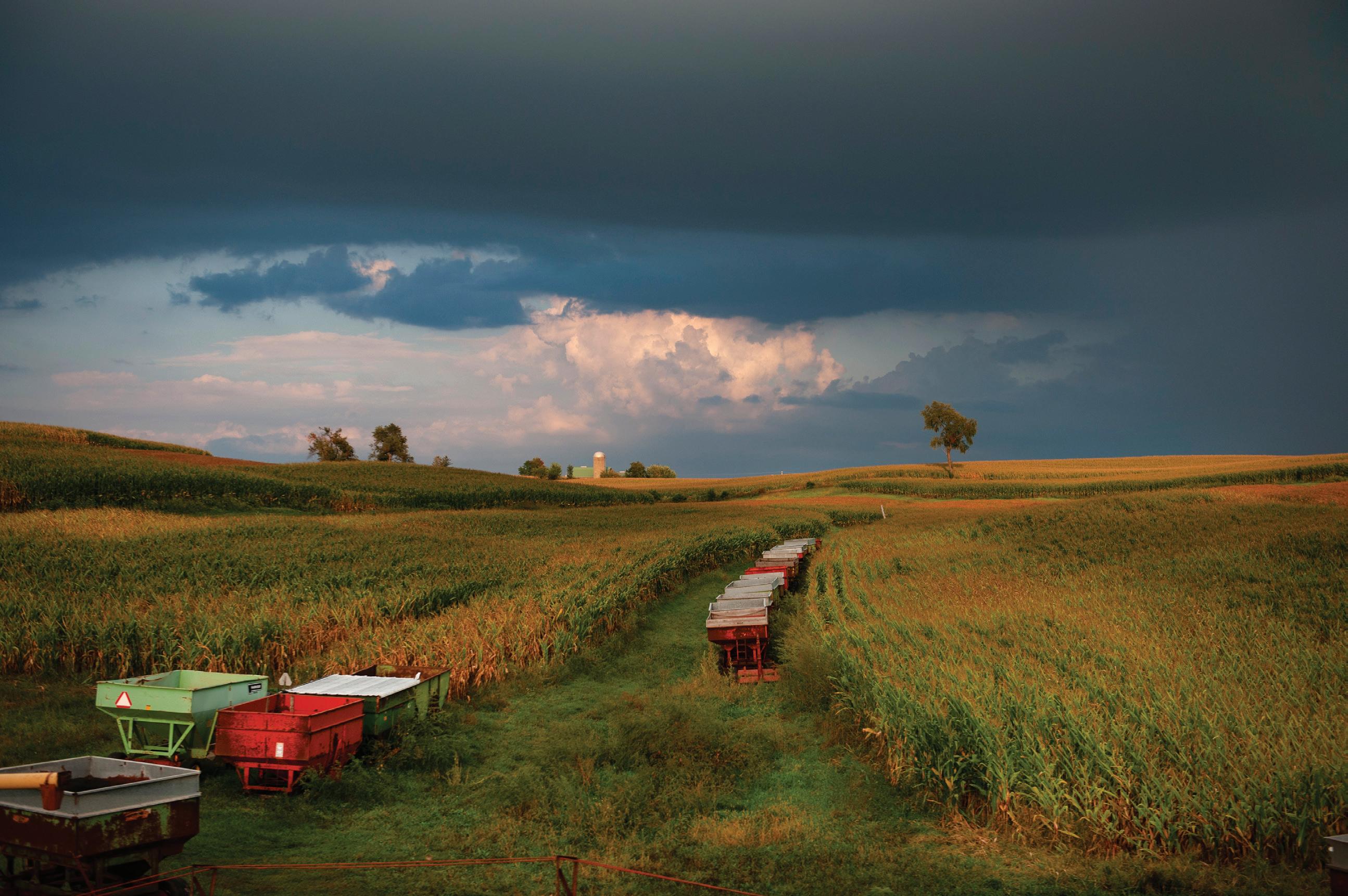




By Dave LaBelle


I love black-and-white photos. I always have.
In my memory bank are powerful black-and-white images, such as Dorthea Lange’s “Migrant Mother” and Nate Fein’s “Babe Ruth Farewell at Yankee Stadium.”
But alongside these iconic photographs are equally powerful color images.










One such color photograph is “Afghan Girl,” made by American photojournalist Steve McCurry and published on the cover of National Geographic in 1985. The penetrating green eyes, red scarf and green background in the portrait of a then-unknown 12-year-old Sharbat Gula connected with readers as no other image had before. It became the magazine’s most popular cover ever, and CNN called it the world’s most famous photograph.
Just as I do not believe Dorthea’s 1936 gripping Depression-era photo of Florence Owens Thompson would have had the same impact in color, Steve’s poignant portrait wouldn’t have





enjoyed its far-reaching impact in black and white.
How colors play off each other is a consideration.
The Afghan girl, with green eyes and a small sliver of green beneath her red scarf, works well against that green background. Another color behind her might not have yielded the same impact.






See if you can see in color. Find or make a photograph that communicates only in color and would fail to have the same impact in black and white. If it is a dull, overcast day, consider adding a little flash to awaken the colors.
Email your best image (just one, please) with caption information, including an explanation of how it affects you, to GPH@pur.coop. We may share submissions on our website and social media channels.
Color affects our moods. Marketers and advertisers know this. Businesses spend millions trying to determine how humans will respond to certain colors and influence our buying habits. Studies have proven that, while color perception is individual, people of different age groups respond and gravitate to different colors.
My wife might say color affects our energy.



















Walking into the Highland Park Fish Camp store seems like stepping through a time portal into old Florida. Mounts of fish and other animals, old photos and fishing memorabilia cover the walls.
Years ago, fish camps dotted major Florida waterways. Few remain today.
“We have been family-owned since 1962,” seventh-generation Floridian Bryn Rawlins Adams says with pride. “We keep the place rustic with that old Florida look. We’re not fancy, but we like it that way.”
Derris Rawlins, Bryn’s grandfather, retired from the U.S. Army and returned to his hometown of DeLand. In 1962, he bought a fish camp on 12 acres at the end of an old logging canal about 5 miles west of DeLand. The canal leads to Norris Dead Lake, a backwater off the St. Johns River.
Norris Dead Lake feeds into the 2,200acre Lake Woodruff, which connects with the 1,800-acre Lake Dexter and numerous other waterways.
In 1964, the U.S. Fish and Wildlife Service established Lake Woodruff National Wildlife Refuge on 21,574 acres. This guaranteed the area would remain wilderness.
When Derris died, the property passed to Bryn’s father and uncle, Rick and Ron. Rick died in 2021. Ron keeps his hand in the business, but Bryn and James Hillman now manage the property.
“It’s sad that so many other fish camps are gone now,” Bryn says. “I remember my dad and I did a trip along the whole St. Johns River in five days on a homemade houseboat. As we went along the river, we saw all the dying and dwindling fish camps. We’re glad that we can still be here.”
Over the years, the camp expanded and put in new facilities, but always retained that old Florida touch. The camp now sits on 30 acres. Visitors can rent cabins or park recreational vehicles in the campground and store boats in the dry storage facility. People can also rent boats ranging from fishing skiffs to pontoon boats.

“We’ve expanded and offer an outdoor venue for things like weddings and community events,” Bryn says. “We have a nice little catch-and-release pond. It’s free to fish.
“People can come out any day and fish, especially with young kids. We do a free fishing rodeo at our pond for kids up to 12 years old. We also do free fishing seminars and hold a free outdoor art show that’s for all Florida-based artists.”
With the area surrounded by wilderness, many people enjoy ecotours or birdwatching trips, but fishing still attracts the most visitors.
A legendary bass stream, the St. Johns system produces numerous largemouth exceeding 10 pounds. These waters also offer crappie, bluegill and other species.
“Our camp record bass weighed 15 pounds, 4 ounces,” James says. “People catch a lot of bass 10 pounds or larger. We’ve caught some crappie exceeding 3 pounds.”
Visitors can book James or other guides through the camp. Call 800-525-3477, visit highlandparkfishcamp.com or look the camp up on Facebook. n


John N. Felsher is a freelance writer, broadcaster, photographer and editor. He’s written more than 3,500 articles on a wide variety of outdoor topics. Contact him at j.felsher@hotmail.com or through Facebook.
Like millions of older Americans, I struggle with mobility. For years, I watched my quality of life slip away, as I was forced to stay home while friends and family took part in activities I’d once enjoyed. I thought I’d made some progress when I got a mobility scooter, but then I realized how hard it was to transport. Taking it apart and putting it back together was like doing a jigsaw puzzle. Once I had it disassembled, I had to try to put all of the pieces in the trunk of a car, go to wherever I was going, and repeat the process in reverse. Travel scooters were easier to transport, but they were uncomfortable and scary to drive, I always felt like I was ready to tip over. Then I found the So Lite® Scooter. Now there’s nothing that can hold me back.
Years of work by innovative engineers have resulted in a scooter that’s designed with seniors in mind. They created Electronic Stability Control (ESC) that makes it virtually impossible to tip over. If you try to turn too quickly, the scooter automatically slows down to prevent it from tipping over. The battery provides powerful energy at a fraction of the weight of most batteries. With its rugged yet lightweight aluminum frame, the So Lite®
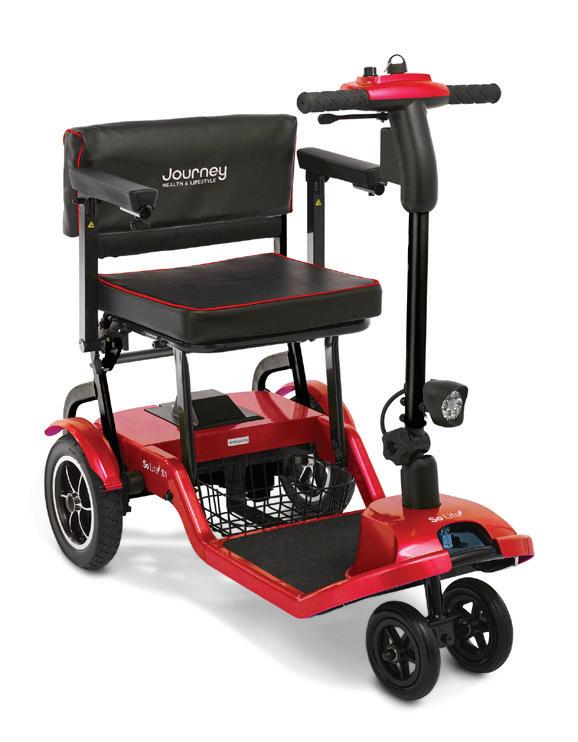




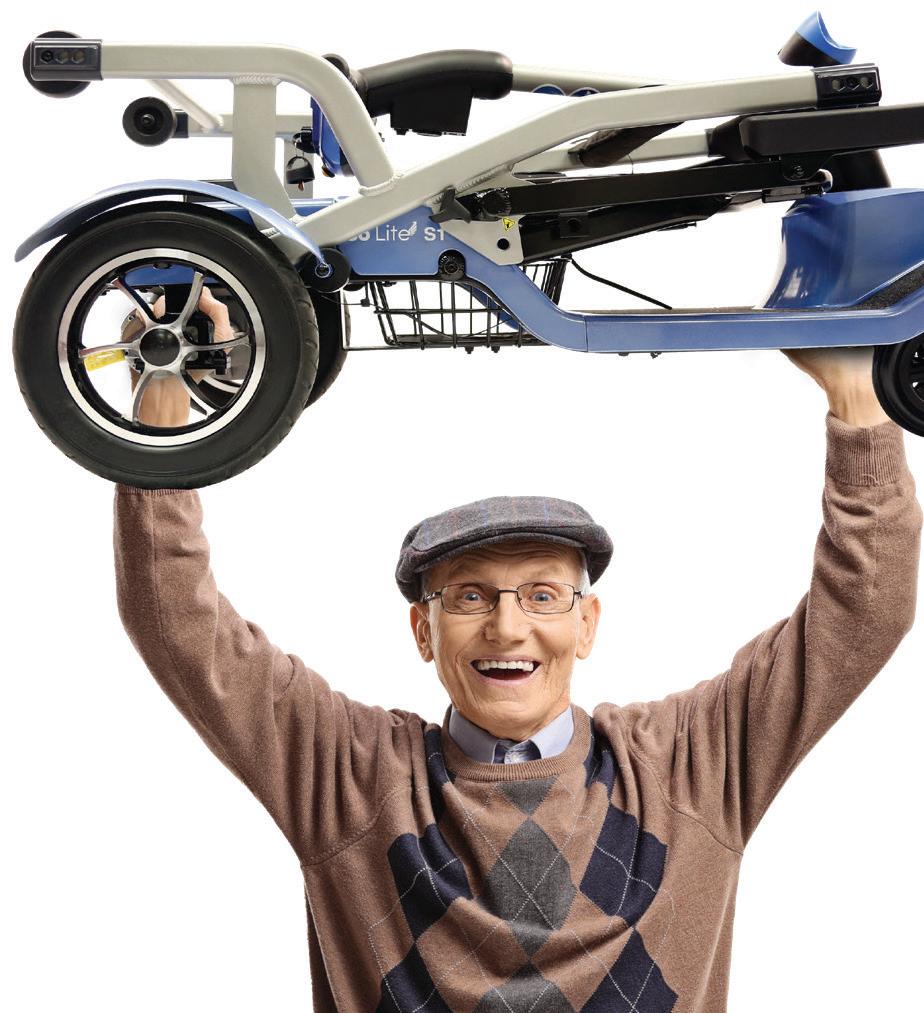

Folds and locks in seconds
Lightweight yet durable
Easier to operate
Scooter is the most portable scooter ever—but it can hold up to 275 pounds—yet weighs only 40.8 pounds without the battery! What’s more, it easily folds up for storage in a car seat, trunk or even on an airplane. It folds in seconds without tools and is safe and reliable. Best of all, it’s designed with your safety in mind, from the newest technology and superior craftsmanship. Why spend another day letting your lack of mobility ruin your quality of life? Call now and find out how you can get a So Lite® Scooter of your very own.







June 1
Mad Libs Live
“Mad Libs Live” is energetic, original and fast-paced. It captures the essence of the classic word game, and watching it can help children distinguish between nouns, verbs, adjectives and adverbs. In the one-hour musical, you meet four students from Blankville Central High School: Gogo the jock, Virtuosa the diva, Merrily the shy artist and Geyser the nerd. www.artinlee.org; 239-939-2787


June 7-July 26
Farmers Market
June 4
East Hill Makers Market
Join us for an outdoor afternoon market and shopping with more than 40 local artisans, food trucks, music, photo booth and children’s activities. Come shop local and meet and mingle with your neighbors from 3 to 6 p.m. This event is free and open to the public. www.myeasthill.org; 850-529-0699

June 1-2, June 8-9
All ages can find something new and exciting around every corner of the state. Filled with rich history, abundant natural beauty and diverse events all year, Florida has something fun for everyone.

There’s a new farmers market in town. Come shop for fresh produce and other items, get something to eat and drink, listen to music and stroll through the wildflower and Bromeliad gardens. There will also be fruit trees, herbs and flowering plants available for sale in the Garden Shoppe. www.edisonfordwinterestates.org; 239-334-7419

License-Free Freshwater Fishing Days
License-free fishing days provide an opportunity for those who don’t have a fishing license to experience the sport or for avid anglers to introduce a friend to fishing without having to purchase a license. On these days, the fishing license requirement is waived for all recreational anglers—residents and nonresidents. All other rules—such as seasons, bag and size limits—apply. www.myfwc.com; 850-488-4676



June 8-15
Fish Out of Water 5K
You’re invited to join in this fifth annual 5K to get out in your local community while making your miles count. We’re encouraging the REEF community and ocean enthusiasts everywhere to get moving in the name of conservation. You can run, walk, hike, bike or even swim, completing the 5K distance in one day or breaking it into smaller sections over the week. www.reef.org/5k; 305-852-0030









June 15-August 31
Art Show
The Art Guild of the Purple Isles presents its second summer show 8 a.m. to 5 p.m. Monday through Friday in the lobby of the Murray Nelson Government Center, 102050 Overseas Highway. The show will feature numerous pieces of original art by members of the Art Guild and will be available for purchase. A public opening reception runs 5:30 to 7 p.m. June 15. Admission is free. www.agpi.us; 305-394-1082


June 15
PensaPride
Join us in celebrating diversity and uplifting the LGBTQIA+ community during an annual all-ages and sober Pride festival. This year the festival will be 10 a.m. to 6 p.m. at the Pensacola Interstate Fair Expo Hall. The event features local LGBTQIA+ artists, musicians, poets, performers and nonprofit advocacy. Admission is $1. www.pensapride.org


June 15
Truman’s Tropical Fruit Festival
Can you tell the difference between a haden and kent mango? At the Tropical Fruit Festival, you’ll have the chance to taste varieties of mangoes and other tropical fruits, sip tasty cocktails, watch cooking demos and more. Learn about planting fruit trees and have the opportunity to buy some. www.trumanlittlewhitehouse.org/foundation/events/trumans-tropical-fruit-festival; 305-294-9911
June 20
Morada Way Art Walk


June 21
Summer Jubilee “A Solstice Celebration”




This is Morada Way Arts & Cultural District’s landmark event. On the third Thursday of each month, fine artists, vendors, residents and visitors congregate to celebrate art and culture in the stunning Florida Keys. Join us from 6 to 9 p.m. for gallery openings, local artists, live music, delectable food and thirst-quenching libations. www.moradaway.org
Join the small businesses of Sebring from 4 to 8 p.m. for an enchanting evening under the summer skies in a solstice celebration like no other. Embrace the warmth of the season as we come together to revel in the spirit of community, creativity and commerce. Indulge in delicious treats, shopping and refreshing beverages, and dance to the rhythms of live music.
https://fb.me/e/3A0owZk4s
June 30
8th Annual Forgotten Coast Sea Turtle Festival

www.floridacc.org


The Florida Coastal Conservancy and Forgotten Coast Sea Turtle Center invite you to participate in this annual event from 11 a.m. to 4 p.m. at George Core Park, overlooking St. Joseph Bay. This event includes music, food, beverages and the Sea Creature Parade, and will take place rain or shine. The event educates attendees about sea turtles and the importance of the coastal habitats they and many other species call home.



Want to share a family-friendly event with the readers of Florida Currents? Head online and enter the details at tinyurl.com/FloridaCurrents. Make sure to submit the item at least 60 days before the event (due to press deadline). If you own rights to a print-quality photo promoting your event, include it with photo credit information.






Water conservation is foremost in people’s minds during dry periods, but it’s important year-round. Follow these tips to conserve water in your landscape:
Putting the right plant in the right place involves more than placing a sun-loving plant in a sunny spot or a shade-lover in a shady spot. You also must consider other conditions, such as soil pH and water needs.
These plants are adapted to regions with frequent drought or to soils with low water-holding capacity. Once established, they can be water-wise additions to a landscape.
Drought-tolerant plants tend to thrive in elevated dry or windy spots, exposed areas, or along unshaded southern and western walls of buildings. Save the low spots—water-adjacent areas and places with poor drainage—for plants that love moist conditions.
It’s common to have woody plants (trees, shrubs and certain groundcovers) planted randomly across an expanse of lawn. While this may be normal, it’s not ideal. The truth is that turfgrass and woody ornamentals have different needs, so it’s easy to waste water in a landscape like this.
You can conserve water and save money by grouping plants according to their water needs. If you have a zoned irrigation system, you’ll be able to water each area based on need.
For sunny, recreational areas, turfgrass is a good choice. But most grass types don’t grow well in dense shade or on steep slopes. Instead of planting grass in these spots, try groundcovers. There are a variety of options, many of which can offer a green-carpet look.
A newly planted landscape often looks sparser than anticipated. Be patient. Plants are usually planted when they’re smaller than their ultimate full-grown size. It’s a common but costly mistake to overplant the landscape to make it seem fuller right away. When plants mature, they’ll be too close together and will compete for water and sunlight. The landscape will look overcrowded, and frequent pruning will be required.
Fast-growing plants may sound appealing, but these kinds of plants require frequent pruning and usually more water than slowgrowing plants. Slow-growing plants may take longer to fill in your landscape, but they can ultimately be less work.
How well your plants perform depends in large part on your choosing the right plant for your climate and location.
The U.S. Department of Agriculture has designated 10 climate zones for the continental United States to guide us in our gardening efforts. The three zones in Florida are zones eight through 10. Considering which zone you live in can make all the difference.
Weeds and fertilizer add to water needs in your landscape. Weeds drink up water your plants need, and fertilizer causes your plants to grow quicker, which can lead to a greater need for water.
Fertilize only when necessary. In very dry times, hold off fertilizing. Keep your beds weed-free by hand-pulling them and adding 2 to 3 inches of mulch, which helps soil retain moisture. It’s never too late to save water. Try these methods today.

Natasha Atlas graduated from the University of Florida’s Agricultural Education and Communication Program in 2021. She loves writing about unique and new varieties of flowers and plants for the Neighborhood Gardener Newsletter and its 10,000 subscribers. When she isn’t writing, she enjoys tending her own garden on her balcony.
















Weatherizing your home provides energy savings and comfort yearround, especially during summer months when your air conditioner is working overtime.
A home with insufficient insulation and air leaks wastes more than 20% of the energy used to heat or cool the home, according to energystar.gov. Fortunately, most weatherization projects are DIY and can be completed in a day.
The simplest and most cost-effective weatherization strategies include air sealing around windows and exterior doors.
If you have older windows, odds are you have air escaping through cracks and gaps around the frame. If you can see daylight around the frame or if the windows rattle easily, you likely have air leaks. Also check for small cracks around the frame that may not be visible with sunlight.
If you suspect you have leaky windows and plan to apply new caulk, be sure to remove the old caulk and clean the area before application. Caulking materials vary in strength and properties, but you’ll likely need a half-cartridge per window.
Silicone caulk is a popular choice and can also be used to seal joints between bathroom and kitchen fixtures.
Another effective but simple weatherization project is installing weatherstripping around exterior doors. The most common types of
weatherstripping options are V-channel, felt and foam tape. Choose the best for your home by considering temperature fluctuations and weather exposure. Most homeowners opt for felt or foam tape; both are easy to install but need to be replaced every couple of years, depending on wear and tear. Weatherstripping should be installed around the top and sides of the door.
If you see daylight around the bottom of an exterior door, consider installing a door sweep in addition to weatherstripping.
Weatherstripping can also be installed around windows. Another way to improve comfort in your home is with insulation. While this is a more costly project and requires a professional’s help, it’s an effective way to decrease heat flow.
Older homes may need additional insulation to replace older materials or meet newer efficiency standards. Contact a qualified installation specialist if you suspect insulation levels are inadequate. The best way to identify air leaks in your home is a blower door test. A blower door test helps determine how airtight your home is and identify air leaks.
In addition to saving energy, air sealing can help avoid moisture control issues, improve indoor air quality and extend the life of your heating and cooling system. Weatherize your home to unlock yearround comfort and savings on monthly energy costs. n
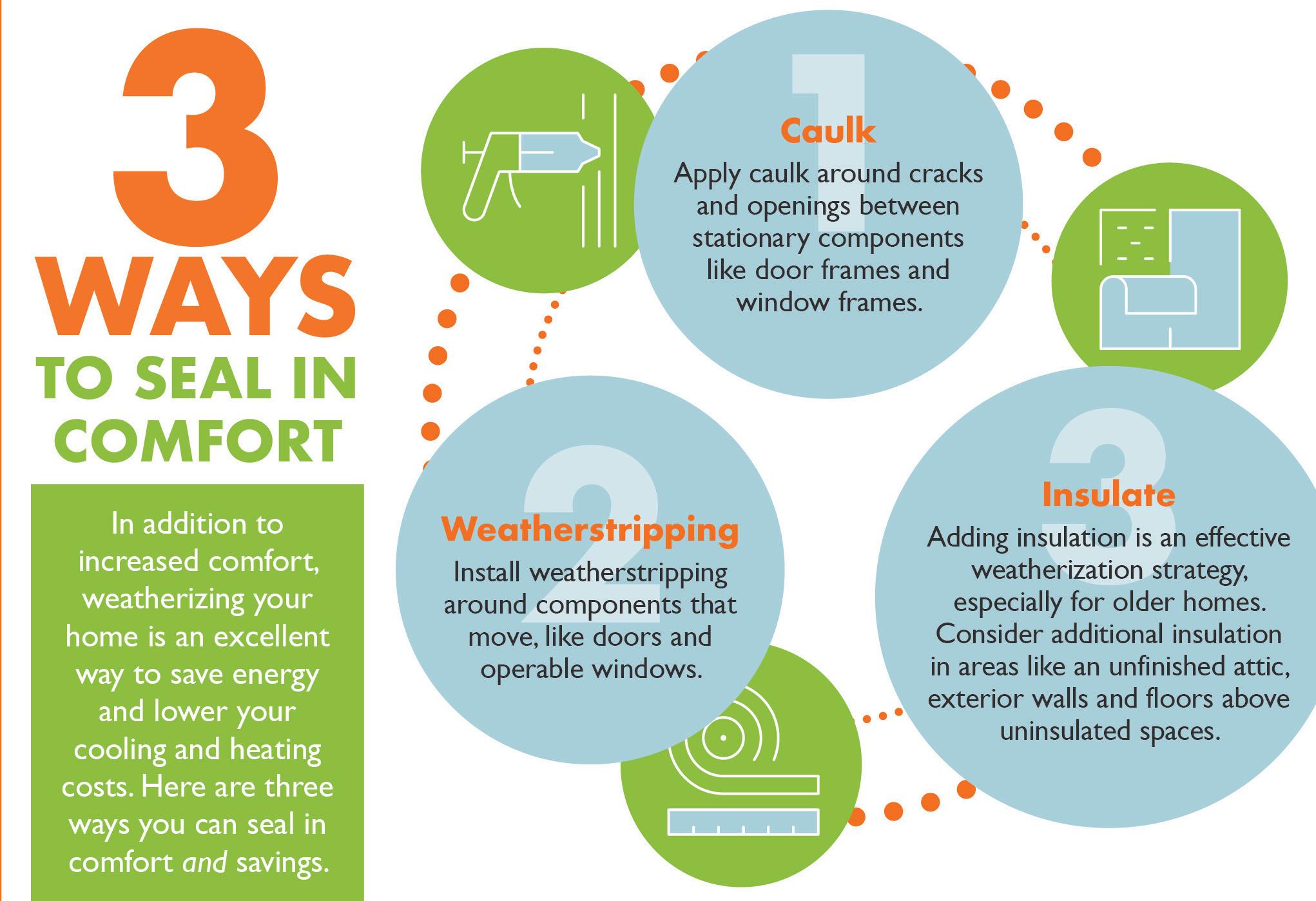
Glades Electric Cooperative’s 79th Annual Meeting showcased the results of the 2024 trustee election April 11 at Glades County Auditorium.
Barney Goodman, Lee Henderson and Jack Coxe were elected to threeyear terms to guide the cooperative in powering communities and serving members. Members also voted to approve the 2023 annual meeting minutes. All trustees attended, as well as GEC CEO Jeff Brewington, attorney Michael Keiber and several members of senior staff. The meeting was open to all GEC members.
For the first time in Glades Electric’s voting history, electronic voting was available to co-op members through the SmartHub app. With the ease of voting from a phone or device at the click of a button, more than twice the number of people participated this year, with a total of 1,315 members voting.
Each member who voted via SmartHub or mail-in ballot received a $5 bill credit.
Kieber reported the election results.
President Jack Coxe reported on cooperative happenings in 2023, including meter and member growth, development planned in the Brighton Seminole Reservation, and the fiber project.
Jeff discussed political events related to the co-op and encouraged members to engage and connect with legislators.
Three grand-prize winners were awarded extra bill credits through a drawing of members who voted in this year’s trustee elections. Congratulations to Teresa Osborn, who received a $2,500 bill credit; Candice Forthofer, who received a $1,500 credit; and Constance Gravina, who received a $1,000 credit.
To hear detailed remarks, watch a video of the annual meeting at www.

gladeselectric.com/2024annualmeeting.
Being a member of an electric cooperative is more than just receiving power to your residence. Co-ops are owned and led by members. Members are encouraged to use their voices to make a difference for their cooperative and participate in the yearly trustee elections.
We look forward to our members electing three trustees for the following districts in 2025: District 1 (Moore Haven), District 3 (Ortona & Palmdale) and District 4 (Lakeport & Brighton).
For additional information regarding trustee elections, visit www.gladeselectric. com/about-us/board-of-trustees.

1,112 votes for Barney Goodman, District 2 trustee representing Hendry County.
1,106 votes for Lee Henderson, District 6 trustee representing Highlands Park.
1,069 votes for Jack Coxe, District 8 trustee representing Lake Josephine area.
1,214 votes to approve the 2023 annual meeting minutes; 58 votes against.


During the week of April 21, co-op leaders attended the National Rural Electric Cooperative Association’s Legislative Conference and visited congressional staff members to discuss issues impacting the delivery of reliable and affordable power to our communities.
Issues included were:
• Federal Emergency Management Agency reimbursement delays.
• Supply chain issues.
• EPA’s Power Plant Rule which prematurely retires power plants and relies on unproven technologies.
We are grateful to have such accessible, responsive and concerned representation in Congress willing to learn how legislation affects the people they serve.


Everyone takes advantage of summer in different ways. Some spend time outdoors, while others prefer to relax inside with a good book or even catch up on household chores.
You may already spend time in your nearest park, so load up the family this summer and experience a new site just a couple hours from home or even out of state.
If your family enjoys camping, many parks offer camping spots to rest your head during a weekend of fun. Make sure to book your spot early though, since summer is prime time to camp and spots tend to fill up faster.
Surrounded on three sides by water, Florida offers beaches for swimming, piers for fishing and boat rentals for adventuring on the water.
Summer in the south can be extremely humid, and not everyone enjoys spending time in the heat.
If this is you, grab a book to take you into another world, but don’t limit yourself to the four walls of your home. Head to a cafe every once in a while to treat yourself to new surroundings, sounds and treats.
If instead you use summertime to catch up on household chores, make sure


to organize your to-do list before diving in. Batch your tasks into cleaning and less time. Whatever you decide to do this summer,




Summer is the season we’ve all been waiting for. It’s 100 days of high dives, ball games and barbecues. It’s 100 ways to dress a burger, catch some shade or get out of town. It’s 100 chances to clear the calendar for what’s most important.
Every two seconds this summer, someone like you will need blood. Donating is quick and easy and,. like all good things this time of year, it’s worth celebrating.
What are your summer plans?
This summer, there are 100 chances to give hope. Choose your day to help save three lives. Donate blood.
Choose your day to give hope. redcrossblood.org














863-946-6200 (member services) 844-201-7203 (24-hour phone payments) www.gladeselectric.com
7 a.m. to 6 p.m. Monday through Thursday
26733 U.S. Hwy. 27
P.O. Box 519
Moore Haven, FL 33471
214 SR 70 W. Lake Placid, FL 33852
Via the SmartHub app ~ 863-946-6200 (24/7 outage reporting)
Please have your account number ready.
John “Jack” Coxe, President, District 8 Lake Josephine, 863-414-3833
Lee Henderson, Vice President, District 6 Highlands Park, 863-633-9281
Shannon Hall, Secretary/Treasurer, District 4 Lakeport and Brighton, 863-946-3242
Donnie Lundy, Trustee, District 1 Moore Haven, 863-946-0402
Barney Goodman, Trustee, District 2 Hendry County, 561-414-8737
Mike Pressley, Trustee, District 3 Ortona and Palmdale, 863-673-9158
Brad Oxer, Trustee, District 5 Venus and Hicoria, 863-441-1866
Fred Tagtmeier, Trustee, District 7 Lorida, 863-214-4994
Angela Hodges, Trustee, District 9 Okeechobee, 863-801-3140
The Board’s next meeting is at 9 a.m. June 27 at Moore Haven Middle-High School. Any changes are posted in the lobby of both district offices.
Jeff Brewington, CEO
Courtney Brown, Chief Personnel Officer
Jennifer Koukos, Chief Communications Officer
Jennifer Manning, Chief Financial Officer
Michael Roberge, Chief Operations Officer
Hurricane season is already upon us, and the experts tell us this will be a busy year.
Our storm team had its first preparation meeting at the end of April. This is an activity we don’t take lightly. Before we could hold our first follow-up meeting, a severe storm hit north Florida, putting thousands in the dark.
Part of every storm recovery plan is working with all other cooperatives in the state through the Florida Electric Cooperatives Association. This “test” storm quickly brought the statewide team together, and our process tested well.
Following a storm, needs of the damaged systems are assessed, and those who are out of harm’s way send crews to help our cooperative friends recover. We were able to send a pair of three-man crews to Tri-County Electric Cooperative headquartered in Madison. We helped this same cooperative recover from Hurricane Idalia in 2023.

The tornadoes that developed in this preseason storm are hard to prepare for, but preparations put in place for hurricanes help. We were able to use the FECA Plan to recover from this non-hurricane event. The early storm serves as a reminder that you should have an emergency plan and supplies in place. Check out our hurricane preparedness information at www.gladeselectric.com/safety/hurricane-preparedness.
Along with preparing for storm season at the end of April, we held the cooperative’s reorganization meeting, which follows the annual meeting each year. The purpose of the reorganization meeting is to elect Glades Electric Cooperative board officers.
This year, officers remained unchanged, with Jack Coxe elected as president, Lee Henderson as vice president and Shannon Hall as secretary-treasurer.
Trustees Donnie Lundy and Mike Pressley represent the cooperative as directors on the board of our generation and transmission power provider, Seminole Electric Cooperative. Trustees Lee Henderson and Barney Goodman represent the cooperative as directors on the board at FECA, our statewide association organization.
With the conclusion of this year’s annual meeting, Jack achieved a milestone: He served the membership as a board member for 30 years. As the longest-serving trustee, he carried the co-op through trying times, including periods of consolidations, deregulation and troubling subsidiary operations, with the cooperative always coming out on top.
As you can see, whether it’s preparing for storms or conducting the routine business of the cooperative, your Glades Electric employees and trustees are a busy bunch, and they always remain your “Neighbors Working for Neighbors.”
